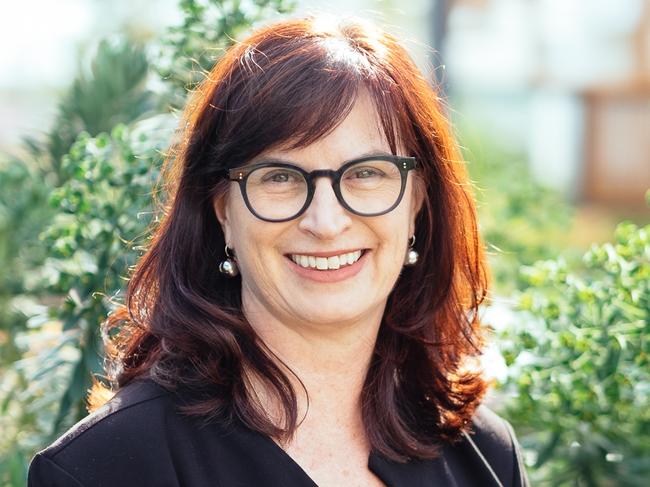How Australia can woo ‘amazing teachers’ for our kids
Australia has an obvious stumbling block in getting would-be teachers to make the career switch. And it’s more than what salary they would be paid.
When Dr Janet Dutton told her high school principal she was going to be a teacher, his response floored her. “Oh what a waste,” he replied dismissively.
She said that moment is etched forever in her memory, but as disheartening as that encounter was, it did not deter the bright young student. Instead it bolstered her resolve to continue on the career path she had her heart set on.
Dr Dutton is now a senior lecturer at Macquarie University School of Education and heads up the mid-career transition to teaching project, which is an postgraduate program to support experienced STEM professionals to become teachers.
“I always knew that I wanted to be a teacher, and even now, students, particularly postgraduate students who are coming into teaching after other careers will say to me that they always wanted to be a teacher, but they were encouraged to do something else, which is unfortunate,” she said.
“I think for those of us who do teach, we know what we want to do, what is at the heart of our desire, and wouldn’t it be wonderful if the people who want to be teachers have the confidence to be teachers.”
Dr Dutton said an obvious stumbling block is getting would-be teachers to forgo more lucrative careers at a time when their working hours are stacking up.

She explains with so many external productivity measures in place at schools, teachers now spend a great chunk of their day dealing with paperwork outside of the classroom.
“I would argue that the time teachers have on holiday is rarely on holiday. That time away from the classroom did used to offer them a chance to regroup for the next year and do the thinking, preparation and planning that is required for their work. Now pay scales haven’t kept up, teachers rarely get the holidays that they used to get – it’s a challenging mix of factors.”
Australia is suffering a crippling teacher shortage with teachers leaving the classroom in droves. At the end of last year there were nearly 2000 full-time teaching positions left unfilled in NSW alone.
Dr Dutton agrees much work has to be done behind the scenes to create a better working environment for teachers, but as a basic start, we need to re-evaluate how we view teaching as a career.
“Everybody wants their child to be taught by an amazing teacher, but nobody wants their child to be a teacher. That mentality needs to change,” she said.
“The remuneration increases are really good, (in NSW starting salaries for teachers increased from $75,791 to $85,000), they’re a good start, but we do know that teachers aren’t attracted to teaching necessarily because of the salary.”
The silver lining is that teachers that are now staying in the system, or those coming into teaching as a second profession may be able to fast track their career.
“Within the profession there are really good opportunities, particularly for people who are happy to move to regional remote areas, to some of our harder to staff schools in. But even in other schools there’s really good pathways.”
“In our mid-career transition to teaching program, one of the things that we really focus on in our work with students is to really recognise the skills they bring from other industries and previous work experience. These teachers can be targeted because they bring to them already advanced and developed skills which position them very, very well for leadership roles in the very near future. They’re moving into leadership roles quickly. We thought, well, they have those skills.
Jeannette Keser, program director of Education at Torrens University Australia explains the
nationwide teacher shortage crisis is seen across early childhood, primary and secondary education, with regional and rural areas struggling the most.
On a positive note, she said major state and federal government campaigns have been implemented to recruit new graduate teachers to address this crisis.

“For example, the Victorian Government recruited 4000 teachers, offering scholarships and fast-tracked courses through which candidates can complete a teaching degree in 18-to-24 months with paid employment. Another example is the National Teacher Workforce Action Plan, which promises to improve the working conditions and status of the teaching profession, including more pay and new opportunities for career advancement.”
At Torrens University Ms Keser said they are seeing teachers seeking professional development for career advancement return to postgraduate study in the high demand areas of inclusive education and reading and literacy. Upon completion, graduates can be employed in specialised leadership roles.
Currently, teachers are required to have a teaching degree and if they want career advancement must do further postgraduate study to be a specialist – early childhood and special education teachers are in the highest demand.
“The number of students wanting to study teaching has dropped considerably over the past 10 years, contributing to this crisis, along with teachers leaving the profession because of inadequate pay and conditions, an overcrowded curriculum and being ill-equipped to manage student behaviour.
“As the population continues to grow this will only cause more stress in schools and impact children’s learning. The impact of this is particularly seen where more and more composite classes are delivered, with larger class sizes, putting more stress on teachers and increasing the need to manage student behaviours rather than teach,” she said.
“Current government initiatives are positive but I believe we also need a total review of what preservice teacher training looks like, the total cost to individuals while studying, including fees and financial loss when on practicum placement, and wellbeing support for teaching graduates entering employment.”
Celebrating inspirational and impactful teachers across Australia. Follow the series
More Coverage
Originally published as How Australia can woo ‘amazing teachers’ for our kids





